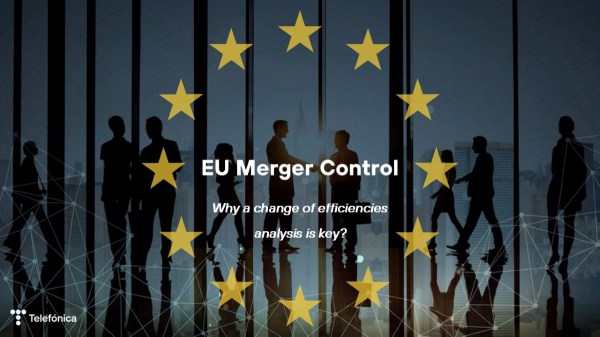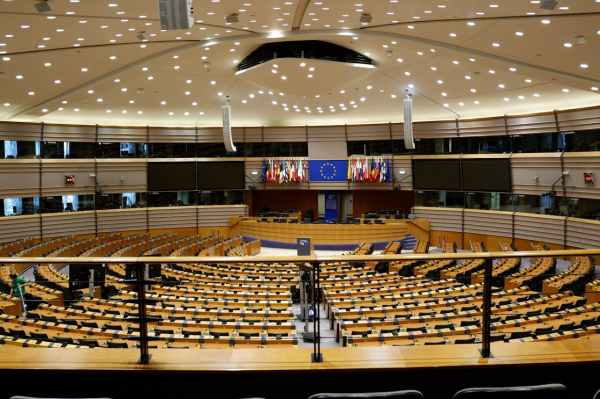Managing spectrum means managing scarcity
Radio spectrum is a public resource and managing it means determining which service, technology or end-users will be able to use it when there is excess demand. Although there is a broad consensus in favour of neutral market-based spectrum management, the fact is that in practice this is not always possible and the role of public administrations is still very relevant deciding which uses are more valuable for society and therefore should secure access to spectrum.
It is therefore appropriate to recall how important access to new mid-band frequencies is for telecommunications operators and its customers, and draw attention to the risk of artificial scarcity created by the possible allocation of an excessive amount of new spectrum for low-power local uses (private networks, WiFi) that do not benefit as much from good mid-band propagation, and could be allocated in higher bands without much inconvenience.
Ultimately, users of WiFi and local networks would be accessing very valuable spectrum and probably paying little or nothing for it, not properly accounting for the opportunity costs. A benefit would be created for providers and users of those wireless technologies, but at the cost of creating artificial scarcity for the deployment of terrestrial public networks, to the detriment of end-users and operators that compete for rights in auctions, pay substantial amounts of money and commit to aggressive coverage obligations.
From an imperfect past to an uncertain future
There are recent examples of the impact that scarcity can have: Italy only made 200 MHz available to operators in the 3.5 GHz band, and the price in €/MHz/pop was double that of Germany (which made 300 MHz available) and four times that of Spain (which made 380 MHz available). In total, Italian operators paid €4.3 billion in 2018 for 20-year licences in the 3.5 GHz band, about four times the country’s annual mobile investment excluding spectrum payments. It is difficult to argue that the higher operator spending and lower spectrum availability in Italy and Germany have not harmed mobile connectivity without a clear benefit in return for their citizens and businesses, beyond revenue for the Treasury.
The European institutions responsible for spectrum management will take in the coming months important decisions regarding the future allocation of the (6425-7125 MHz) and (3800-4200 MHz), and must ensure that the artificial scarcity of spectrum does not become, again, a bottleneck that prevents demand for mobile connectivity from being met efficiently.
6 GHz: One plus one, less than two
In the 6 GHz band, the debate revolves around the possibility of sharing spectrum between cellular and WiFi networks. The concept is superficially appealing: by allowing the deployment of both types of networks with certain restrictions that have the least possible impact on the cost or quality of deployment, a flexible framework can be achieved that maximises the value of the spectrum and avoids making irrevocable decisions today.
The problem is that the proposed conditions would severely limit the value of the band for mobile use. For example, one of the proposals is to limit the transmitting power of mobile networks so that signals do not travel as far, thus avoiding interference with WiFi networks used indoors. However, this proposal ignores the fact that around 70% of the traffic carried by mobile networks is generated indoors, typically in public places or offices outside the user’s home. In addition, when the power that can be transmitted in the 6 GHz band is reduced, the inherent advantage of the band is wasted, making it similar to higher bands which have shorter propagation distances and are much less scarce.
3.8-4.2 GHz: let’s not close doors that cannot be reopened
Telefónica has been warning for some time, with little success, about the inefficiency of allocating a large amount of spectrum to low-power local use in such a valuable band, that allows the re-use of existing sites and for which an ecosystem of handsets and network equipment is already available.
We continue to believe that the benefits envisioned by policymakers can be achieved at virtually no cost by concentrating the spectrum allocated to low and mid power local networks across Europe in the upper part of the band. A reference could be the 100 MHz identified in Germany in a similar band in 2019, which has so far proven more than sufficient. This would avoid irreversible fragmentation and leave open the option of using the remaining 300 MHz for public mobile networks in the future.
Improving the institutional framework to facilitate good decision making
In Europe, we have equipped ourselves with spectrum management institutions capable of carrying out high-quality technical analyses of coexistence between services, which can confidently conclude, for example, that “in order to ensure that there is no interference between services, it is necessary to limit the transmitting power to X milliwatts”. This is an important step, but it does not in itself ensure that spectrum allocation decisions are optimal. It is also necessary to translate these technical constraints into euros of additional cost and, even more difficult, to estimate in euros the value to the end-user of the various alternative services that can be provided. The departure from market-based mechanisims should also be justified.
The current EU decision-making process is a decentralised model in which responsibility for carrying out socio-economic cost-benefit analyses before taking harmonised decisions on spectrum allocation is dispersed. As a result, it is not easy to carry them out or to incorporate them into decision-making, even though growing demand and the difficulty of finding new bands make them increasingly necessary. Therein lies an exciting challenge for the new legislative cycle.









